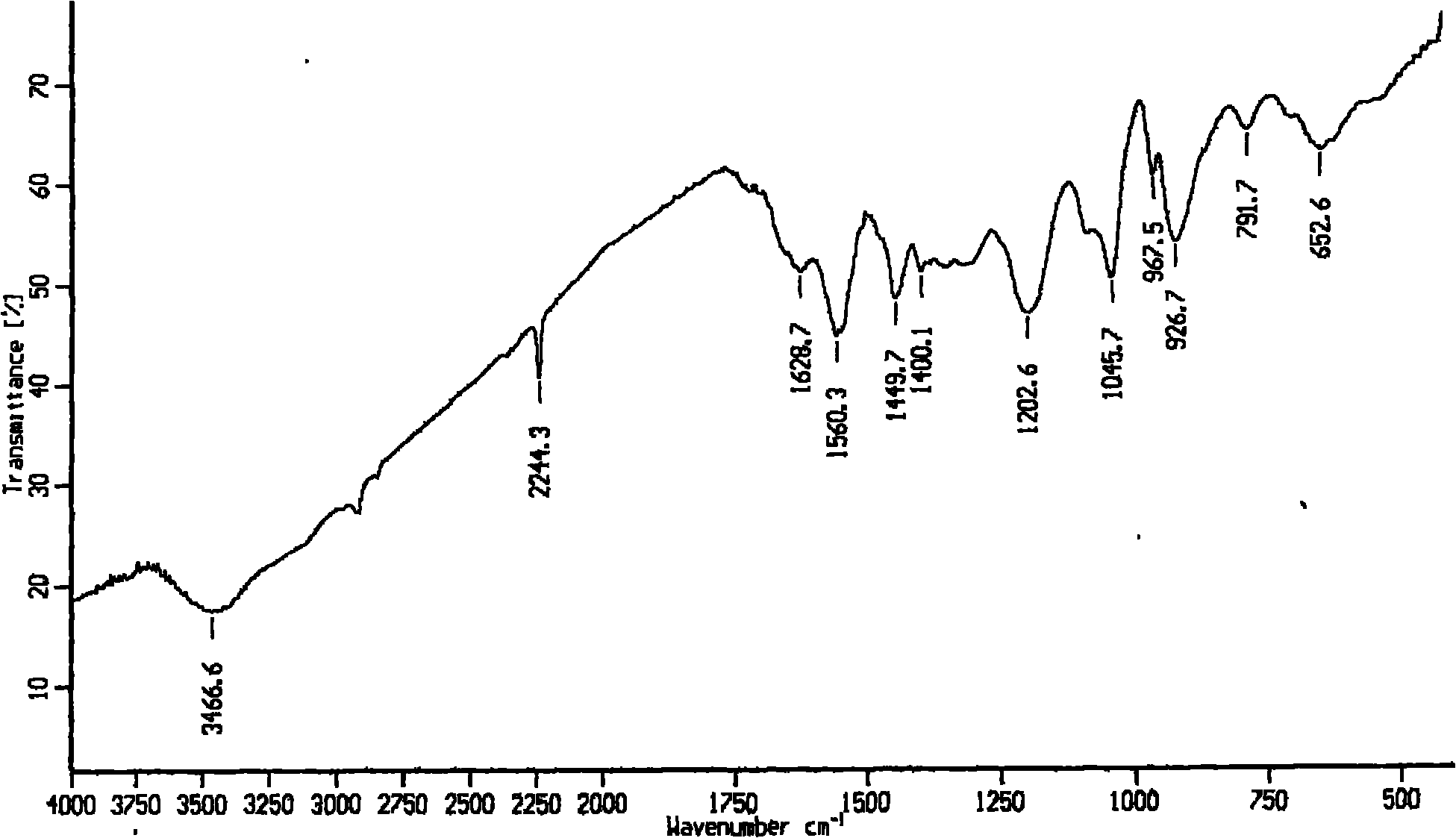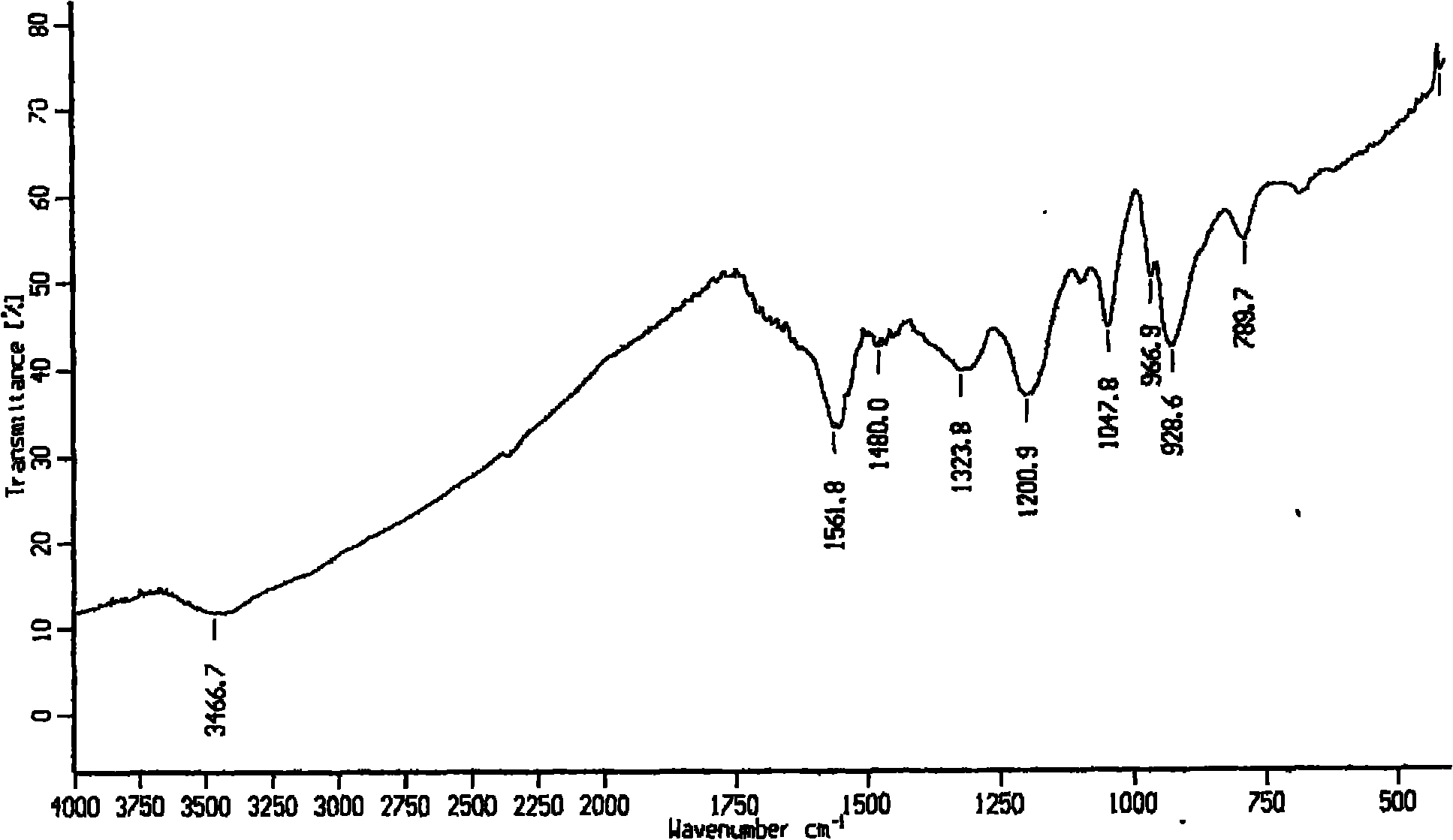Use of polypyrrole composite fibers in viral adsorption
A technology of composite fiber and polypyrrole, applied in functional fiber and its application, polypyrrole composite functional fiber and its application in the field of absorbing viruses, can solve the problems of inconvenient use and high cost, and achieve cheap materials, low cost, The effect of simple production operation
- Summary
- Abstract
- Description
- Claims
- Application Information
AI Technical Summary
Problems solved by technology
Method used
Image
Examples
Embodiment 1
[0038] Add 500ml of water, 50ml of ethanol, and 2g of pyrrole to the reaction flask and stir well, and then add 10g of acrylic fiber to soak for 4 hours. Then add 300ml of iron trichloride (0.5mol / L) aqueous solution and react at room temperature for 1 hour. After the fiber is taken out, washed with water and dried, a polypyrrole / acrylic composite fiber is obtained.
Embodiment 2
[0040] Add 500ml of water, 50ml of ethanol, and 2g of pyrrole to the reaction flask and stir well, then add 10g of polypropylene fiber and soak for 4 hours. Then add 300ml of iron trichloride (0.5mol / L) aqueous solution, and react at room temperature for 1.5 hours. After the fiber is taken out, washed with water and dried, a polypyrrole / polypropylene composite fiber is obtained.
Embodiment 3
[0042] Add 500ml of water, 50ml of ethanol, and 2g of pyrrole to the reaction flask and stir evenly, and then add 10g of chlorinated fiber soak for 4 hours. Then add 300ml of iron trichloride (0.5mol / L) aqueous solution and react at room temperature for 2 hours. After the fiber is taken out, washed with water and dried, a polypyrrole / chlorinated fiber composite fiber is obtained.
PUM
 Login to View More
Login to View More Abstract
Description
Claims
Application Information
 Login to View More
Login to View More - R&D
- Intellectual Property
- Life Sciences
- Materials
- Tech Scout
- Unparalleled Data Quality
- Higher Quality Content
- 60% Fewer Hallucinations
Browse by: Latest US Patents, China's latest patents, Technical Efficacy Thesaurus, Application Domain, Technology Topic, Popular Technical Reports.
© 2025 PatSnap. All rights reserved.Legal|Privacy policy|Modern Slavery Act Transparency Statement|Sitemap|About US| Contact US: help@patsnap.com



